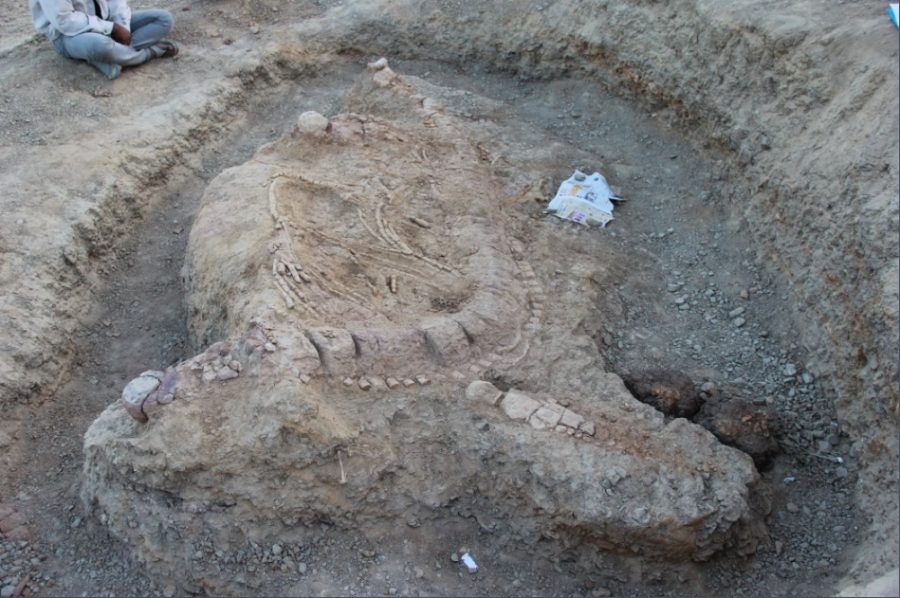An extremely well-preserved fossil of an ichthyosaur — an ancient dolphin-like reptile that lived around 150 million years ago — was found around the remains of its prey in India. Scientists in the study published October 25 in the journal PLOS ONE say this finding is more important than usual because of the country where it was found — an area which the dinosaur didn’t usually frequent.
Although this sea monster is nearly 18-foot-long (5.5 meters), it is not the longest of its kind ever found. Adult ichthyosaurs measured from 4.5 meters to 9 meters. According to the study, this creature lived during the Kimmeridgian — an age within the Jurassic period, established from about 157 million to 152 million years ago.

The bones of the creatures, according to the scientists, are still inside the rock. However, the size and shape of the animal made them think that it’s likely part of the Ophthalmosauridae family, which lived around 165 million and 90 million years ago.
However, according to Dean Lomax — a paleontologist and visiting scientist at the University of Manchester — a “positive identification” can be given only once the bones “have been removed from the rock.”
“Incredibly rare and important fossils are often found in the least expected locations,” Lomax said. “This new study provides further insights into the distribution of ichthyosaurs during the Jurassic and the evolution of that group.” – Live Science reported.
This finding led to more new research. In Germany, scientists used its cells to study how it was possible that these immense creatures lived in a low-oxygen environment when they had such big lungs.
The lead researcher and geologist at the University of Delhi, Guntupalli Prasad, said in the statement that this discovery helped them to understand the “diversity of ichthyosaurs” and the way they evolved “in the Indo-Madagascan region.”
The researchers consider that this finding is fascinating and revealing. Ichthyosaurs are not often found in the South Hemisphere, although scientists have spotted some of them in South America and Australia. These creatures have been mostly discovered in North America and Europe, areas precisely under the cold temperatures they needed.
Being hopeful, and assuming they are right about which kind of member this creature is, scientists think it can also help them to understand more about the Ophthalmosauridae family.
The study sheds light for more discoveries

Scientists were able to understand more about what this creature fed on not only because it’s surrounded by fossilized ammonites and squid-like belemnites, but also because of its large, strong teeth, which are well preserved, too.
When they conducted the study, researchers realized that these creatures preferred crunchy food. In the paper, they wrote that the dinosaurs used their teeth to “grasp a prey with a hard exterior” – like armored fish, crustaceans, and thick-shelled ammonites.
“We could infer from wear patterns on its teeth that this ichthyosaur was a top-tier predator that fed on hard and abrasive food material, including marine mollusc, fish, and possibly other marine reptiles,” lead researcher Guntupalli Prasad said.
Lomax said that this “fascinating” study makes him think that maybe any other scientist had found an ichthyosaur in India because no one ever looked for them in the area.
Source: PLOS ONE

Clone it. You can do it!